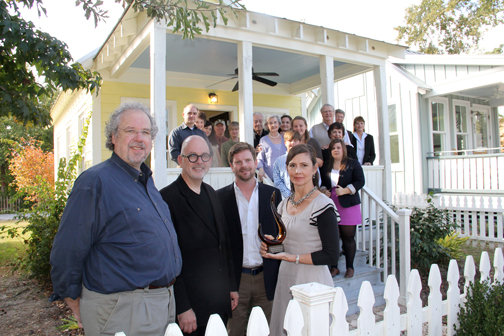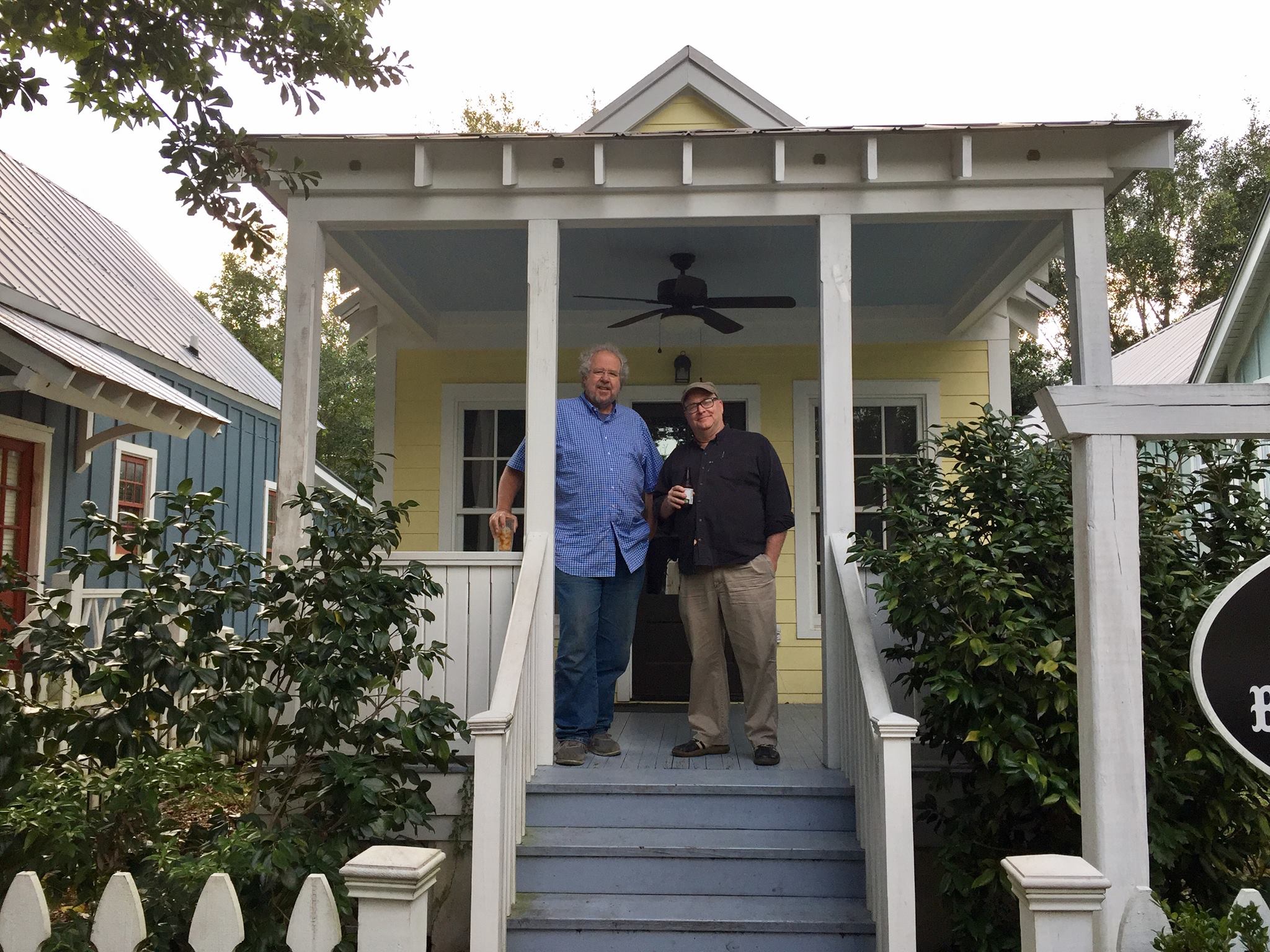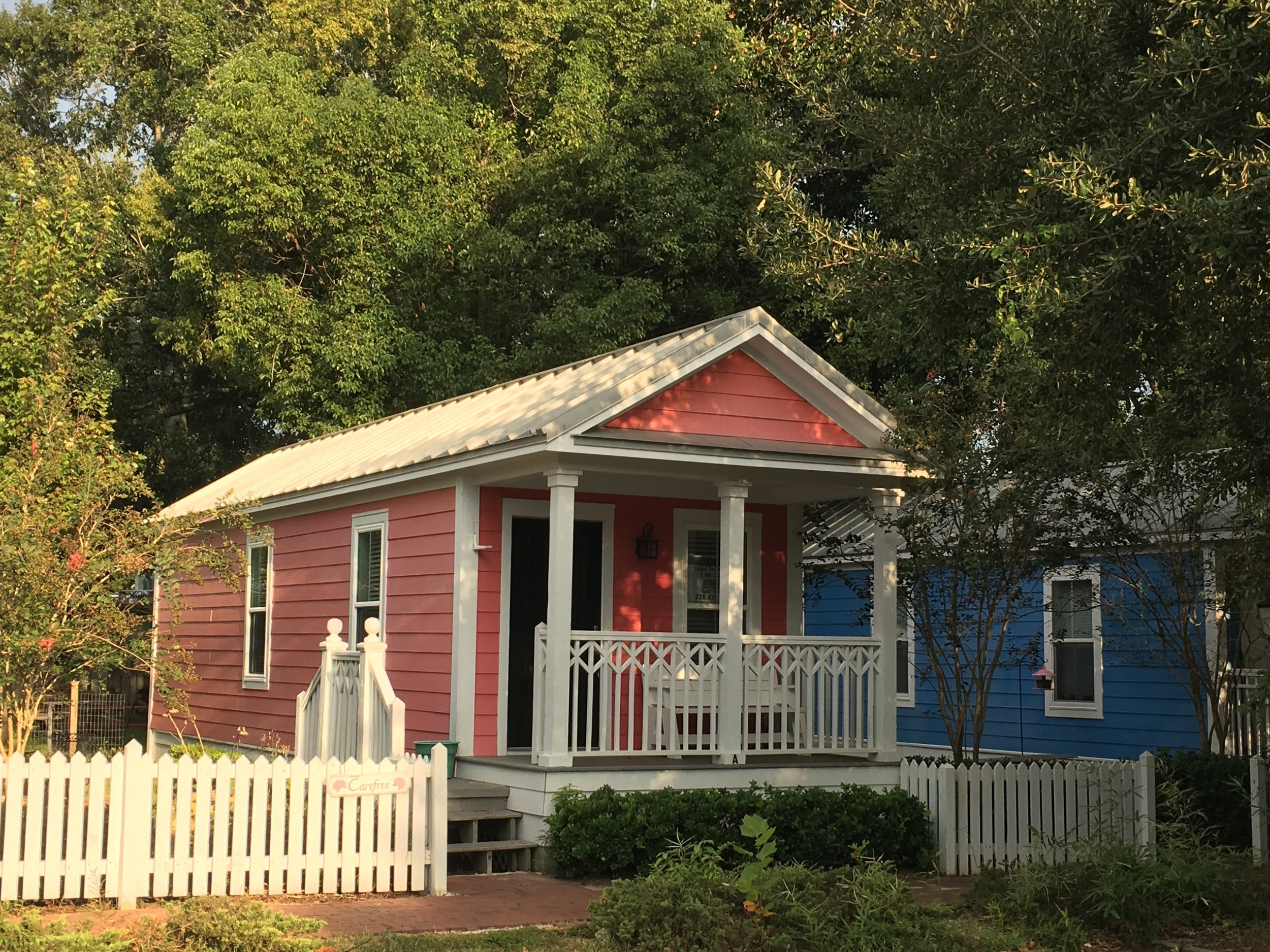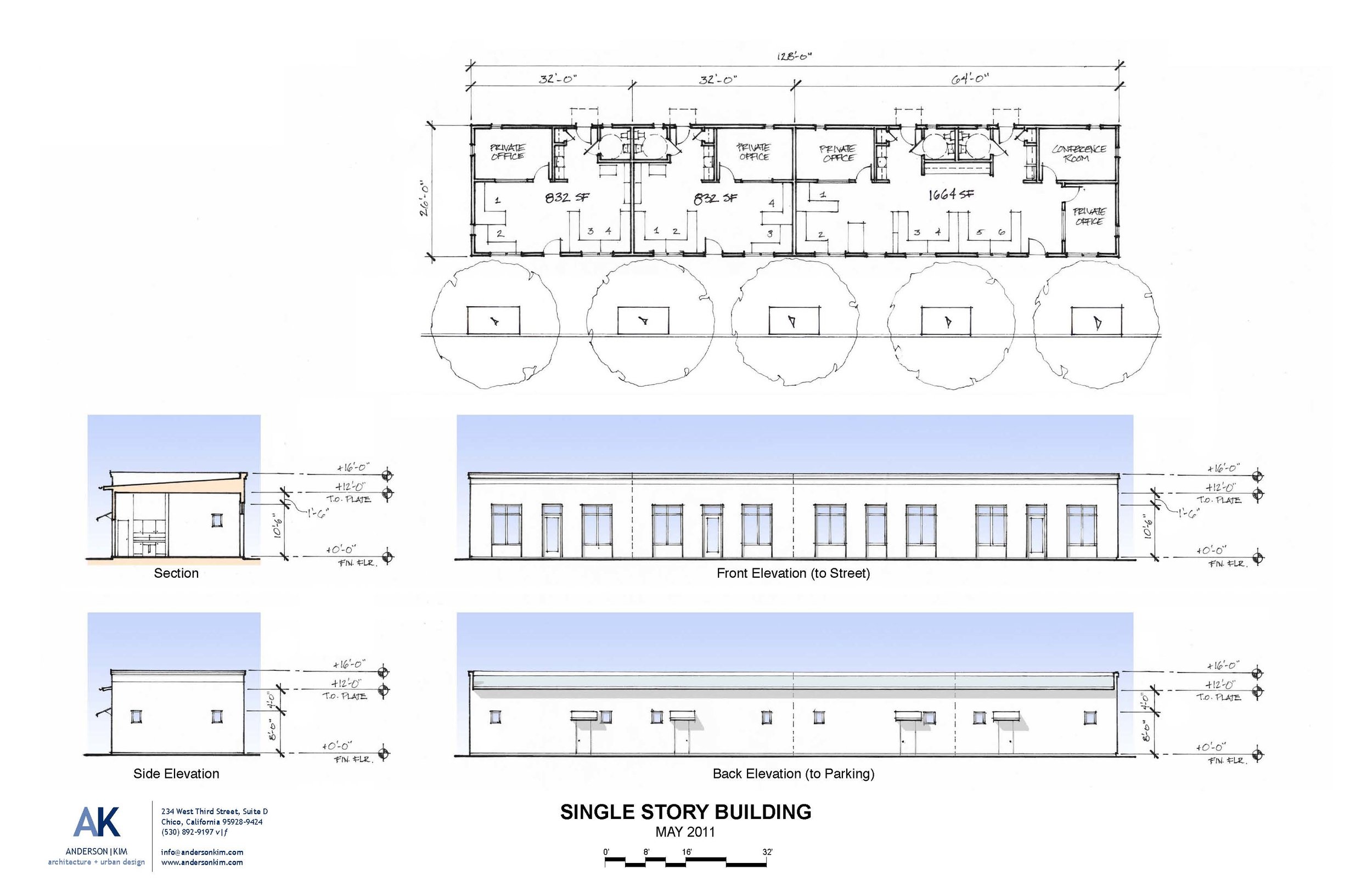 Last weekend I was working on a charrette crew that included my colleague and partner, Bruce B. Tolar. Searching through my hard drive today I came across my (improvised) remarks from when the New Urban Guild gave the 2015 Barranco Award to Bruce, the Developer/Builder of Cottage Square in Ocean Springs Mississippi.
Last weekend I was working on a charrette crew that included my colleague and partner, Bruce B. Tolar. Searching through my hard drive today I came across my (improvised) remarks from when the New Urban Guild gave the 2015 Barranco Award to Bruce, the Developer/Builder of Cottage Square in Ocean Springs Mississippi.
"For those of us who knew Michael Barranco and were there for the Katrina charrettes, this is a person who really made a mark on our lives, not just because we showed up and did work together, but because his character was such that it was like playing in a pro-am: You really upped your game when playing around Michael. Very genuine. No artifice. No phoniness. He was genuinely concerned about every person he ever met, and wanted everyone’s life to be better. He decided that architecture was his way to do that.
With his passing, there is a hole in the CNU, but the New Urban Guild offers the Barranco Award to practitioners who are that kind of stand-up guy. It’s about the character with which you comport yourself. It’s about how hungry you are to learn. It’s about how much you care about your community. It’s about how much you love and encourage your fellow-citizens. With that said, I’d like to introduce you to this year’s award-winner, Bruce Tolar, through some of his work. <begin slides of Bruce's projects>
The original Katrina Cottage which by itself was great, but Bruce took it out of the total chaos and mayhem and bad financial circumstances that were pretty much an everyday deal in Ocean Springs at that time, and all along the coast. And from nothing, he created the peaceful excellence of Cottage Square, where he put the pieces together into something amazing which that community cherishes. It has even become a tourist destination. Imagine that: an interim housing solution after a hurricane has become a tourist destination!
So Bruce pulled together all the Katrina Cottages that were built as prototypes for demonstration purposes and brought them to Cottage Square. And he made something out of the pieces, just as we all try to do, which is to aggregate a great place from small incremental parts. It is a modest place, with gravel sidewalks; a place where you can operate a tiny business out of those tiny buildings. And the community that has formed there has become a real anchor to Ocean Springs. From there, Bruce launched an expansion, which was an incredibly ambitious project in a place governed by FEMA… <cough> <laughs and applause> … a terrible environment to work under, but he is doing amazing, excellent work with modest little pieces.
He reached out to nonprofits in the area; he connects with so many people; he’s been in that town forever, serving on many boards; and the idea that there was something to be done after a hurricane, and fixing civilization in general, was a natural thing for Bruce. The people love this neighborhood. The nonprofits he’s been working with have been tremendously empowered by seeing one guy’s ability to put people together and make things work. Bruce is the best design caulking gun you can imagine, pulling everything together on modest means and making things happen. So with that, I’d like to present this year’s Barranco Award to Bruce Tolar."
If you are traveling along the Gulf of Mexico between New Orleans and Mobile you should give yourself a treat and stop to walk around Cottage Square. It is a special place built in tough circumstances by a remarkable guy.
 We (David Kim, Bruce Tolar, Will Burgin and I) are currently working on a wide range of tools for delivering walkable neighborhoods and incremental development. After Hurricane Katrina, Bruce and a host of others put in thousands of volunteer hours producing an alternative to the awful FEMA travel trailer that came to be called the Katrina Cottages. The State of Mississippi's Emergency Management Agency (MEMA) commissioned several thousand MEMA cottages of various sizes that were used as part of the hurricane recovery effort and eventually were sold for permanent housing.
We (David Kim, Bruce Tolar, Will Burgin and I) are currently working on a wide range of tools for delivering walkable neighborhoods and incremental development. After Hurricane Katrina, Bruce and a host of others put in thousands of volunteer hours producing an alternative to the awful FEMA travel trailer that came to be called the Katrina Cottages. The State of Mississippi's Emergency Management Agency (MEMA) commissioned several thousand MEMA cottages of various sizes that were used as part of the hurricane recovery effort and eventually were sold for permanent housing.

 Last weekend I was working on a charrette crew that included my colleague and partner, Bruce B. Tolar. Searching through my hard drive today I came across my (improvised) remarks from when the New Urban Guild gave the 2015 Barranco Award to Bruce, the Developer/Builder of Cottage Square in Ocean Springs Mississippi.
Last weekend I was working on a charrette crew that included my colleague and partner, Bruce B. Tolar. Searching through my hard drive today I came across my (improvised) remarks from when the New Urban Guild gave the 2015 Barranco Award to Bruce, the Developer/Builder of Cottage Square in Ocean Springs Mississippi.
